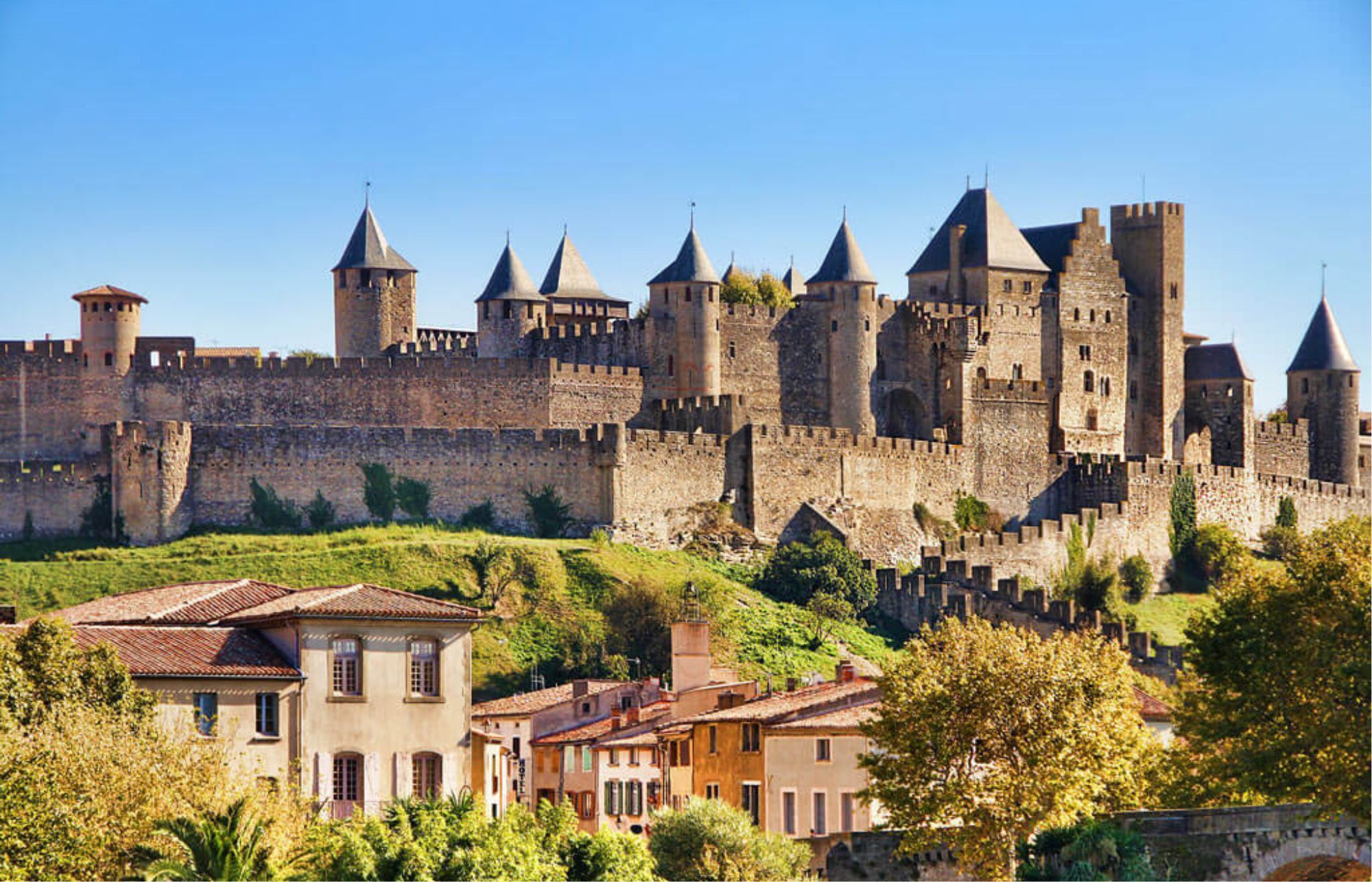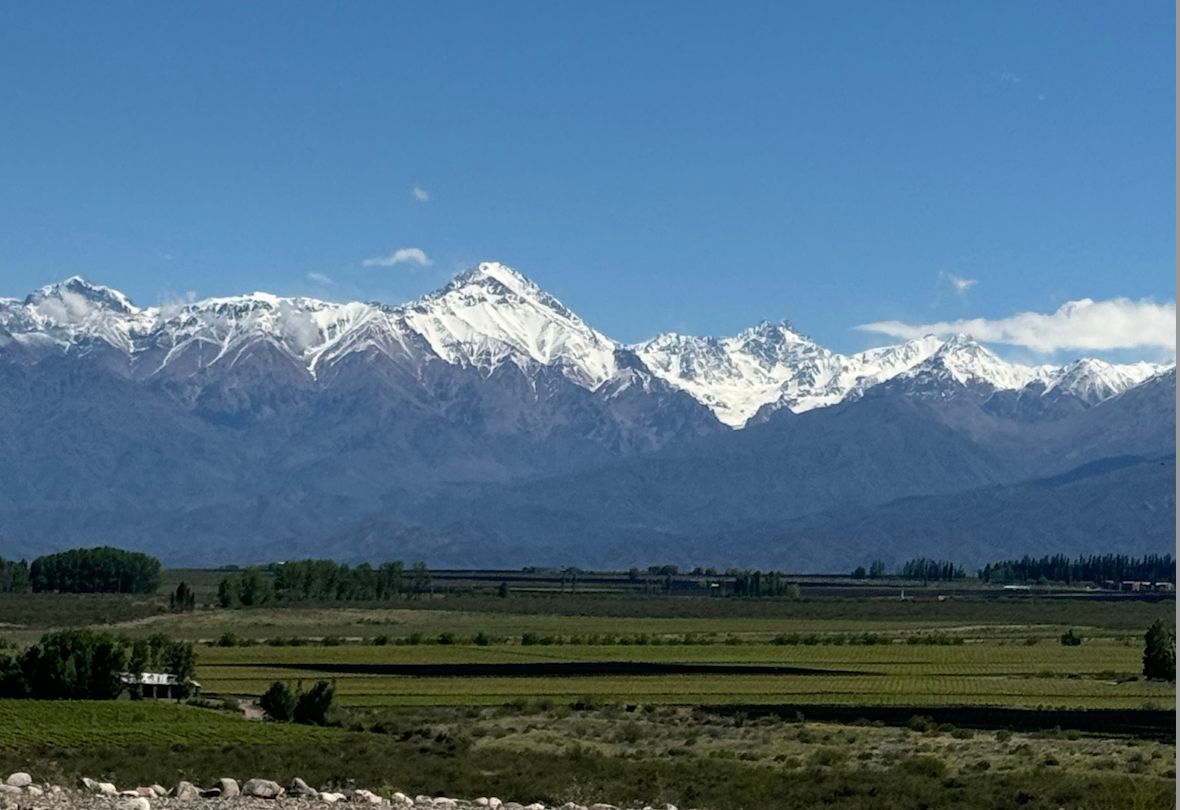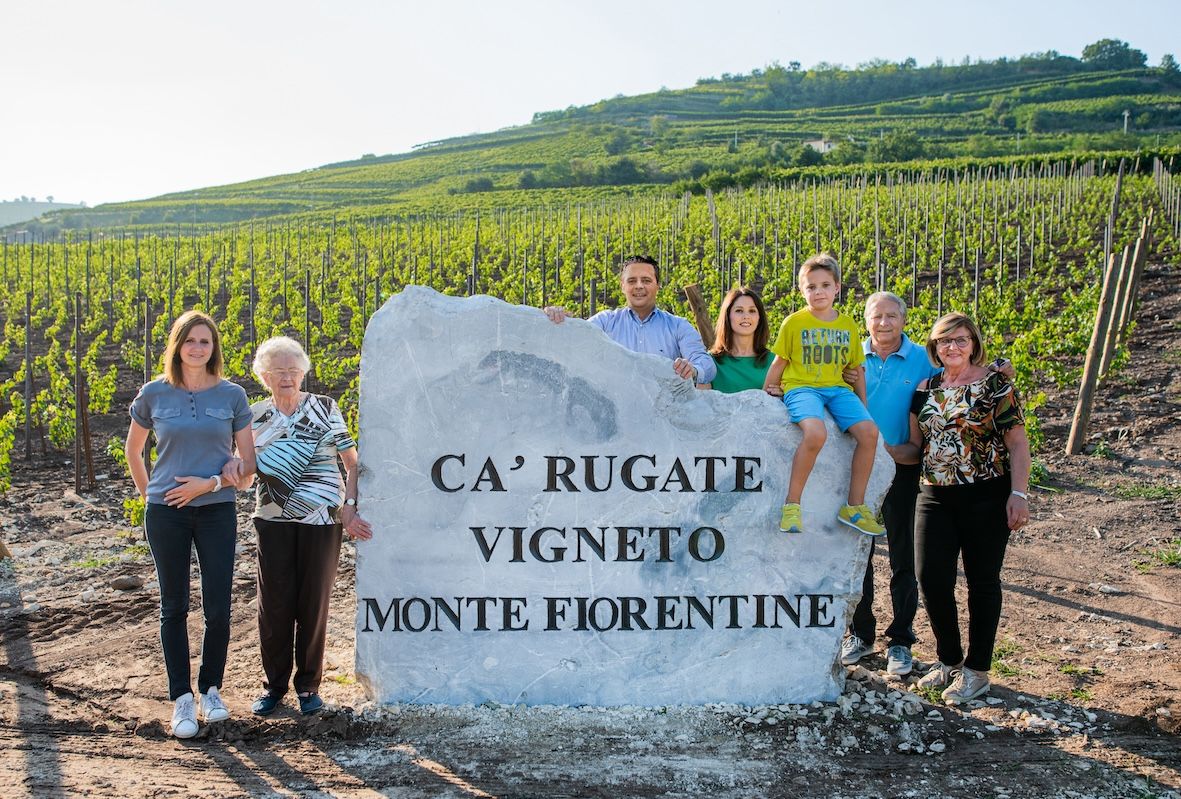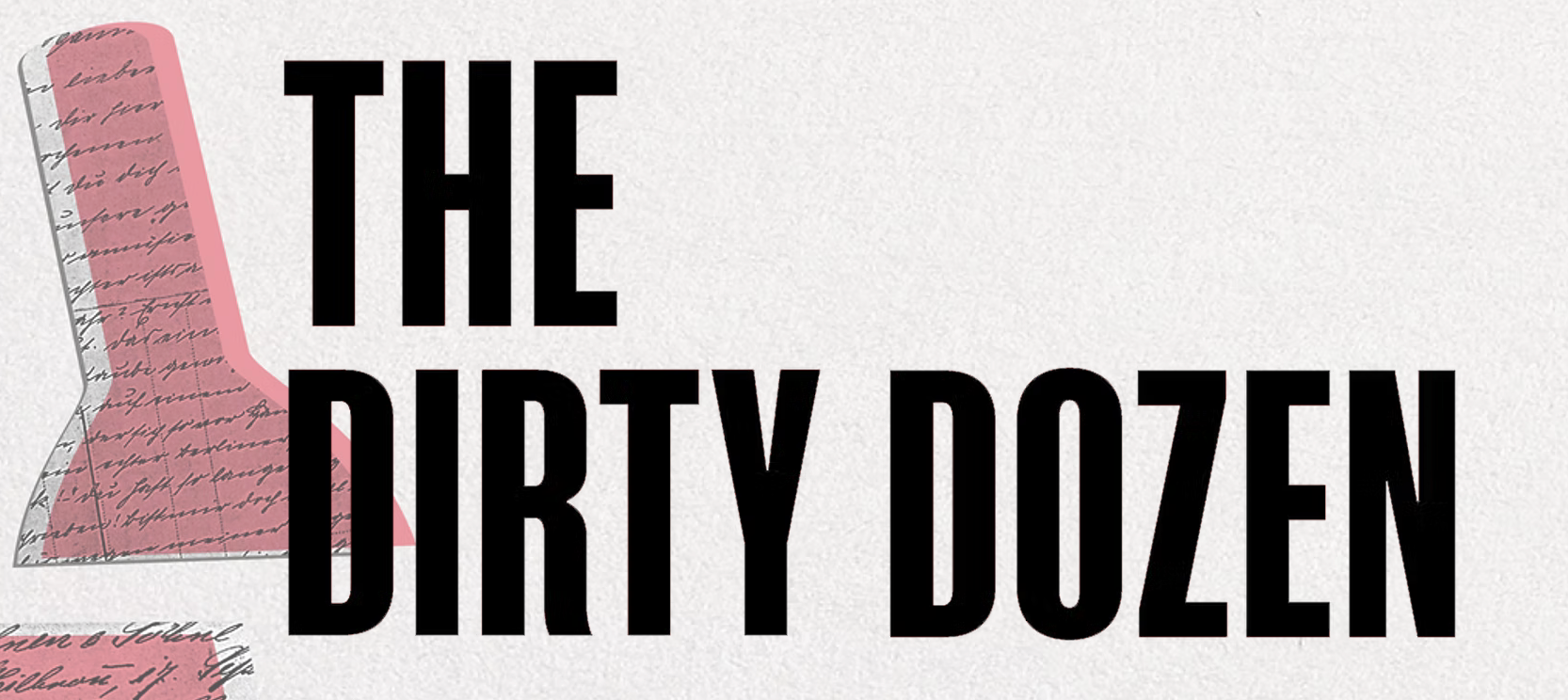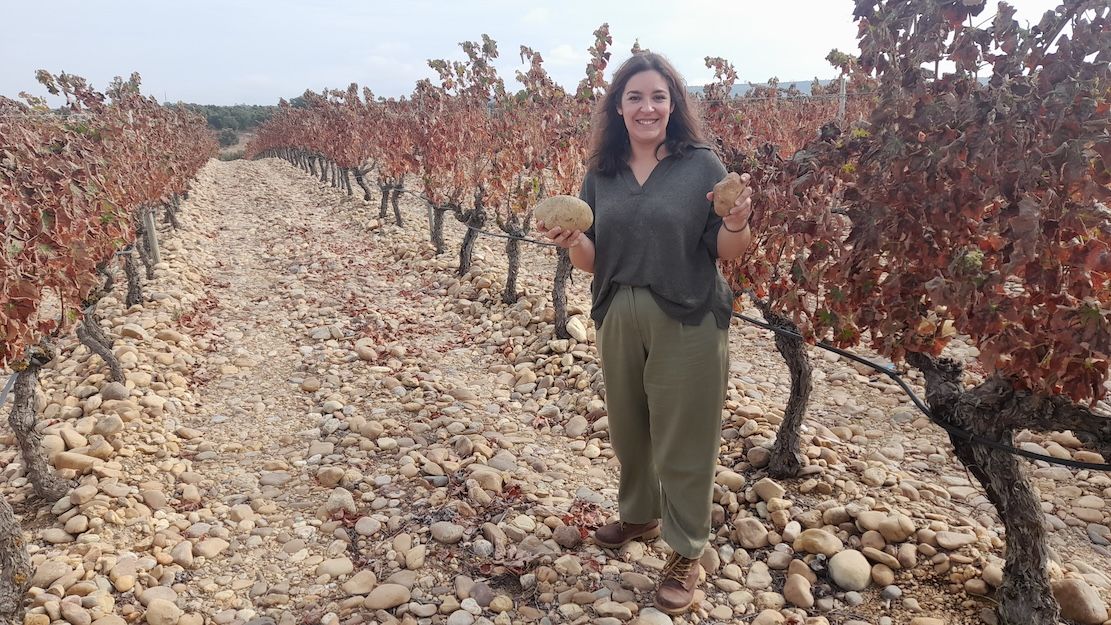“Our growers never use pesticides anyway, we don’t irrigate and the climate here is perfect for low intervention viticulture. The main change was an increase in traceability and which growers were responsible for what, which is a great thing for us. Oh, and paperwork,” says Antoine Robert, director at Corbières co-op Castelmaure – one of the producers to shine at Experience le Sud.
When we look at the world of French wines, we can often be guilty of bunching regions and producers into generic pigeonholes. The likes of Bordeaux, Burgundy and Alsace, for example, are generically viewed with a certain style or quality of wine often without even a hint of a mention of intra-regional nuance. I get it. There’s lots of wines out there in the world and it takes the pressure off to be able to stick things in boxes and move on. But the South of France has always proved a very different kettle of fish.
An evolving region full of surprises
The size and scale of production, coupled with the speed of growth and change, across a wide range of landscapes and terroirs makes it impossible to generalise. The trade has tried of course. Ever since the producers in these regions took the burden of production following the loss of the vineyards of Algeria and Morocco in the 60s and 70s, the Languedoc was seen as a producer of decent quality bulk wine. Roussillon was often paired in the same bracket. The Southern Rhône Valley could enjoy the reputation from the likes of Châteauneuf-Du-Pape or Lirac to have an elevated status.
But as the vintages have passed and the industry has evolved, some areas of Languedoc have provided some of the most exceptional terroir and high-class wines available in France. The Côtes du Rhône AOC has proven that they too can produce great quality, value wines at the lower end of the price scale. The appellations of Roussillon have continued to prove themselves a different and glorious beast entirely. You cannot appreciate the wines of the South of France without pouring them in your glass and finding out for yourself.
Experiencing the ‘Experience Le Sud’ tasting

To that end, it was a pleasure to head over to Holborn in London earlier this June to attend the “Experience Le Sud” tasting. The event is put on each year by the Bureau de la Région Occitanie, a wide-reaching marketing and promotional body that represents the wines, culture and lifestyle of the Occitanie region that stretches from the Spanish border in the west to the edge of Provence in the east.
From a wine point of view this includes the appellations and regions of Languedoc (the language of ‘Oc’), Roussillon, areas of the South West of France (including the likes of Madiran and Cahors), and parts of the Southern Rhône to the west of the River Rhône. If you’re thinking that’s a lot of different wines and styles to fit in one room, you’d be right.
But instead of picking out my top 6 or 12 or 25 wines on the day, I went in to look for the range of producers who came along to look for distribution in the UK. From big to small, from value end to fine wine, they all play a part across this huge region, and each can offer a very attractive set of wines to UK importers.
Sisters doing it for themselves

One the smaller end of the scale comes sister duo Marie-Francoise and Elisabeth Poux, who run Domaine de Pech Ménel in the small village of Quarante in the appellation of Saint Chinian. Although the property covers around 55 hectares, only 25 hectares are planted with the vines, with the rest left to pine forests and garrigue herbs.
The vines are planted on south facing slopes across clay-limestone, sandstone and schist soils of the Gard region. The sisters have run the estate since 1989, and although always practising organic viticulture, only secured certification in 2020. “We’re now at a stage where our clients are demanding it on the labels,” commented Elisabeth Poux. “It’s meant more paperwork, but overall it’s great to see that more and more are understanding its importance.”
The wines are very classical Saint Chinian blends, with the reds made from Syrah, Grenache, Carignan and Mourvedre. Also, and of growing interest in the region, were whites from Rolle, Viognier, Grenache Blanc and Roussanne. Highlights included:
Blanc de Pech Ménel, Saint Chinian AOC, 2021
A blend of 40% Rolle, 30% Grenache Blanc, 20% Roussanne, and 10% Viognier with 70% aged in old oak barrels. Very pretty jasmin and peach blossom notes on the nose, with plenty of apricots, mangoes, nectarines, lemons and limes. That Grenache Blanc helps to add a lovely textured grip on the mouth and really lifted the finish. Beautiful wine. Ex-Cellar €7.00-€9.99
Château Pech Ménel, Saint Chinian AOC, 2019
50% Syrah, 30% Grenache, 20% Carignan Noir all from vines between 15 and 60 years old. Beautiful ruby colour shining in the glass followed by plenty of red cherries, plums, wild raspberry and thyme. The 14.5% alcohol was well integrated and the grippy tannin made me think this would be an excellent wine for a fancy burger restaurant. We got to try some older vintages, but the freshness of the 2019 really sold it for me. Ex-Cellar €7.00-€9.99
Old/new wine estate embracing agroforestry
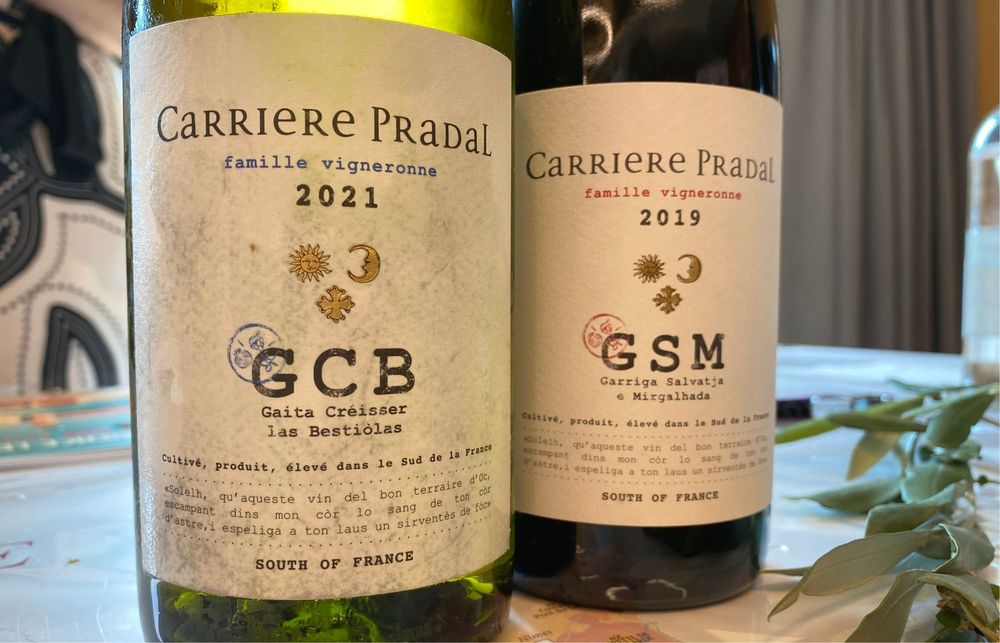
“We’re both an old and a new wine estate,” begins Carriere Pradal’s Claire Carrière. “My husband and brother-in-law are the 7th generation of their family to run these vineyards, but the first for many decades to make the wines themselves.” Based across 60 hectares of organically farmed land in the commune of Servian, a stone’s throw from the town of Béziers, the estate produces a range of reds and whites from the classic Languedoc grapes including Syrah, Grenache Noir and Blanc, Mourvedre, and Clairette.
Other than the high quality of the wines, this estate stands out for its embracing of agroforestry as a means to build the future of the winery.
“Ten years ago my mother-in-law had a vision to bring back life to the vineyards, and not just in pockets across the estate,” explained Carrière. “Since then we’ve planted trees and bushes every 13-15 rows in all our vineyards and are now starting to see the benefits with vibrant levels of insects, bats and birds helping the vineyard to grow as well as more congenial microclimates with less evotranspiration and more shade.”
The estate now plays host to visiting viticulturalists and government dignitaries keen to study the feasibility and short and medium term benefits from such a move. It also helps that the wines are very drinkable indeed, with highlights including:
GCB, Languedoc AOC, 2021
A blend of Grenache Blanc, Clairette and Bourboulenc, that’s not what it says on the label. Gaita, Créisser and las Bestiòlas are the same grapes translated into the old language of Occitanie as a nod to the pride the winemakers have in their roots. Elévaged with 6 months in new and old barrels, this is a beautifully judged combination of stone and citrus fruits with toasty notes and a grippy mouthfeel. A fabulous gastro wine. Ex-Cellar €7.00-€9.99
GSM, IGP Pays D’Oc, 2019
Syrah, Grenache Noir and Mourvedre (labelled Garriga, Salvatja and Mirgalhada) these grapes are grown on sunny shrublands and (as much as it sounds like the most obviously twee thing to say!) you really get a nose of that in the glass. Along with those garrigue notes comes plenty of red and black fruits and smoke, with chewy, ripe tannins, but a surprisingly subtle and light finish making this a wine for all year round. Ex-Cellar over €10.00
France’s biggest player in organic wines
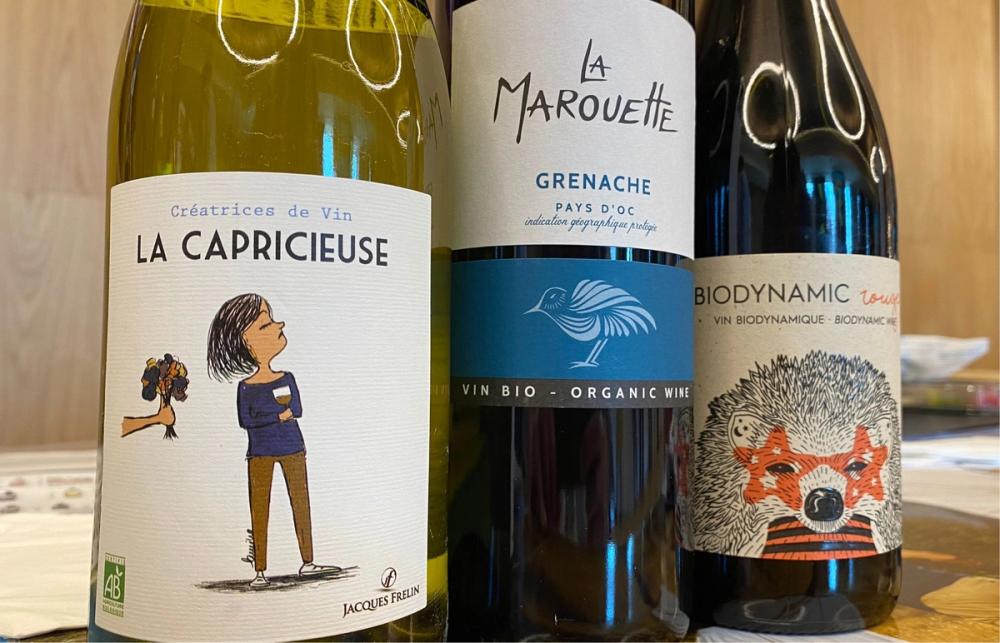
Jacques Frelin, formerly Terroirs Vivants, claims the distinction of being the leader in the production of organic wines in France. Established as a winemaking concern in 1983 by Jacques Frelin, the wines were organically produced from the start, and the company now produces the equivalent of 3.4m bottles of organic wine per year.
The company is a négotiant, owning its own vines but also relying on the relationships it has fostered over the years with growers across Languedoc, Roussillon, the Rhône Valley, Provence and even Bordeaux. The result is that its winery in Nîmes produces an impressive range of wines, some of which are made to order for larger retailers across France and for export.
Export sales manager, Luba Tichina, explained the ethos of the team and what kind of buy-in it needs to be part of this set up.
“Jacques Frelin has always wanted to show that organic wine needs to be for everyone,” began Tichina. “Our relationship in France with the nationwide Biocoop stores have helped us prove that with our wines started from just a few euros per bottle on the shelf. That commitment has definitely struck a chord further afield with the likes of the Scandinavian monopolies looking for a great range of prices but always having that ethical certainty behind it.” Of those ‘wines for everyone’, my three favourites were:
La Capricieuse, IGP Pays D’Oc, 2021
Part of a range of three wines celebrating three of the women in the team, this set of wines has been a huge hit in South Korea where one of the most popular TV shows is a Sex in the City-style show about three women who now regularly drink these wines on screen. Of the three, this Viognier and Chardonnay blend really stood out for its integrated green and stone fruit notes and acidic balance with a really easy, light and slightly mineral finish. Ex-Cellar €4.00
La Marouette Grenache, IGP Pays D’Oc, 2021
The Marouette range is the first of its range to attempt bottle return and reuse through their retail partners. This 100% Grenache Noir was an old school southern French Grenache, with ripe and jammy fruit (without being burnt). Nice peppery kick to this and a very clean, juicy finish. Would be lovely as a house wine. Ex-Cellar €3.00
Hérisson, IGP Pays d’Oc 2022
As mentioned earlier, this is the first biodynamic wine in the range, produced after a reverse enquiry from a Finnish client. Made from 100% Merlot, it has those bright, light, red fruit notes, especially on the palate, that you expect from biodynamic wines. Despite being 14% abv, the freshness stays with you throughout and the result is a very ‘smashable’ wine. Ex-Cellar €3.00
Corbières co-op with real class
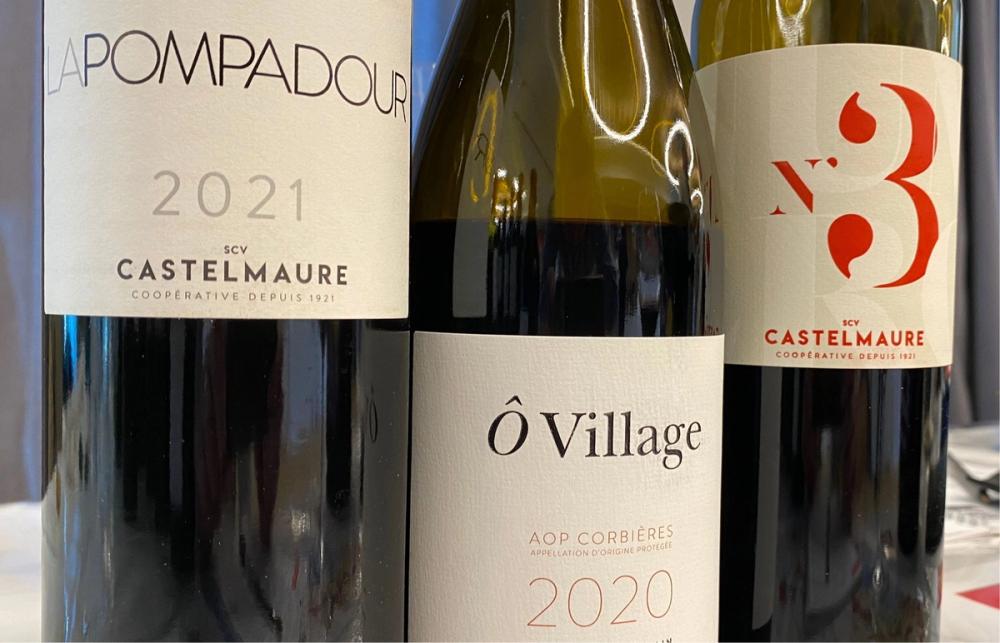
The co-operative of Castelmaure is based in the very south of the Corbières AOC region. The 60 growers together manage 420 hectares of vines that produce a modest 15,000 hL per year (due to naturally lower yields) in this hilly terrain. In fact, Corbières is the largest single AOC in the region, at around 70km2, and has a large range of terroir available to the growers there. The vines of Castelmaure border both Fitou and Roussillon to the south.
The entire operation is HVE Level 3 certified, with over 25% of the managed vines either certified organic or in conversion. I spoke with co-op director Antoine Robert to ask about the challenges of obtaining HVE status in Corbières.
“It was fairly easy,” admitted Robert. “Our growers never use pesticides anyway, we don’t irrigate and the climate here is perfect for low intervention viticulture. The main change was an increase in traceability and which growers were responsible for what, which is a great thing for us. Oh, and paperwork.”
The hills of the Haut-Corbières, with their clay-limestone and schist soils are ideal for the range of black grapes which include old vine Carignan (dating back to 1911), Grenache and Syrah. All grapes are hand-picked and whole bunch-fermented for a more aromatic style of wine, with the triumvirate of the Ô Village, La Pompadour and No. 3 all particular favourites on show.
Castelmaure, Ô Village 2020, Corbières AOC
A blend of 70% Carignan, 20% Syrah and 10% Grenache, this wine was fermented in concrete tanks before being placed very soon into bottles for a two year ageing period before release. Packed with black plums, dark cherries and licorice notes, this wine builds really nicely in the mouth, with tangy minerality and warm but well integrated alcohol.
Castelmaure, La Pompadour 2021, Corbières AOC
A blend of 50% Carignan, 30% Syrah and 20% Grenache, this wine holds particular place in the hearts of all at Castelmaure as the first wine the property released in 1978. Ever since the start the Carignan in this wine has been through carbonic maceration, the wine blended, then spending one year in barrel. The result is a distinct kirsch note from the carbonic maceration, with tangy black plum, cherry, garrigue and smoke.
Castelmaure, No.3 2020, Corbières AOC
A blend of 70% Syrah and 30% Grenache, this is the wine where they turned the aromatics up to 11! A multi-hour cold soak is followed by a cool temperature carbonic maceration leaving those dark berries, plums, sweet spice and garrigue aromas jumping out of the glass at first smell. The 15% abv on the label may put some off, but it remains beautifully fresh throughout the long finish.
Experience Le Sud was an event organised by the Bureau de la Region Occitanie. For more information about the work of the bureau or the wines they represent, please contact Isabelle Kanaan on isabelle.kanaan@occitanie-london.com or Sébastien du Boullay on sbastien.duboullay@occitanie-london.com
Mike Turner is a freelance writer, presenter, educator, judge and regular contributor for The Buyer through his editorial company Please Bring Me My Wine. He also runs a wine events and ecommerce business, Feel Good Grapes, that explores and discusses the idea of sustainability in the wine trade.
